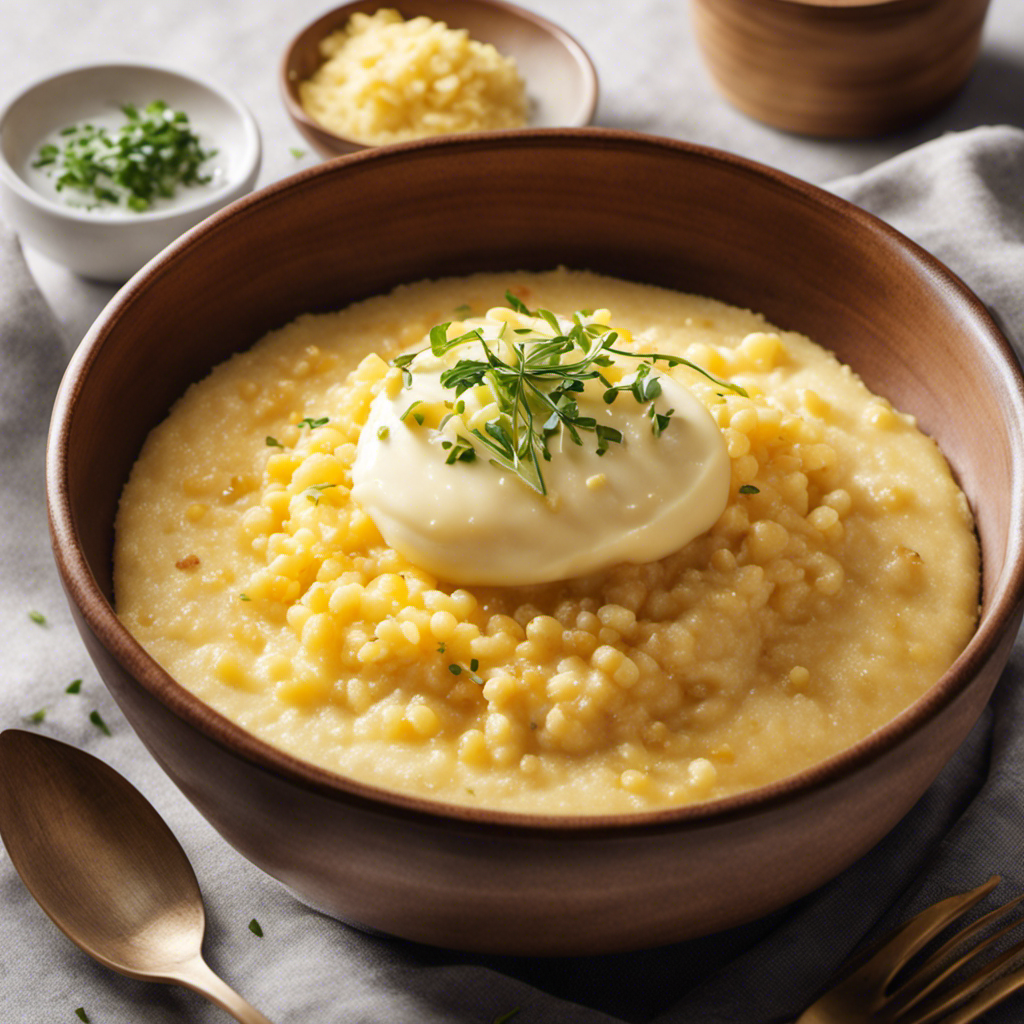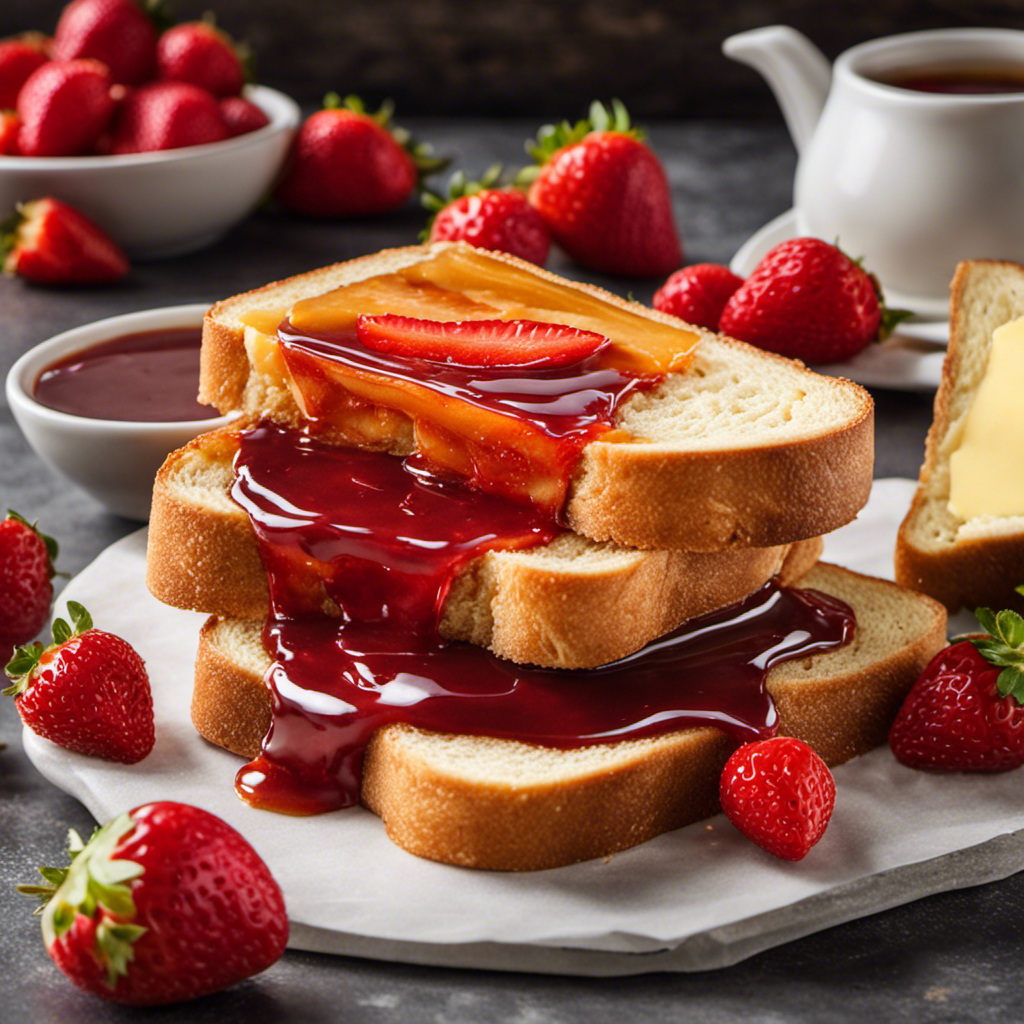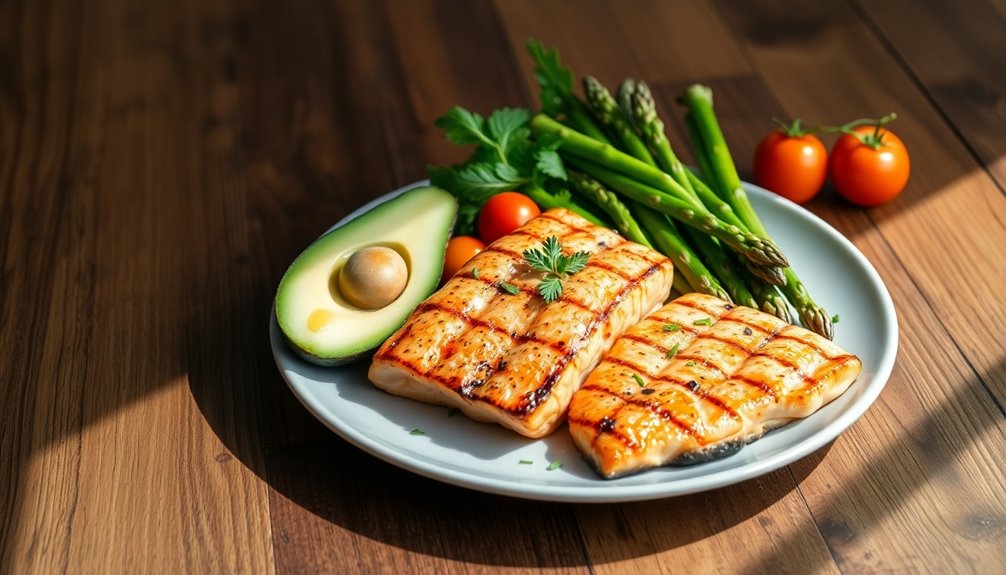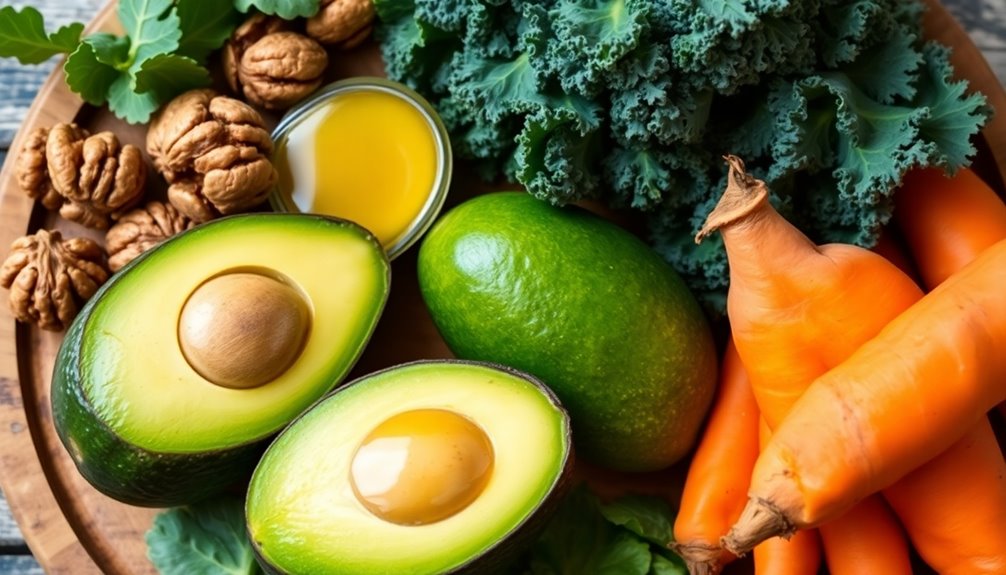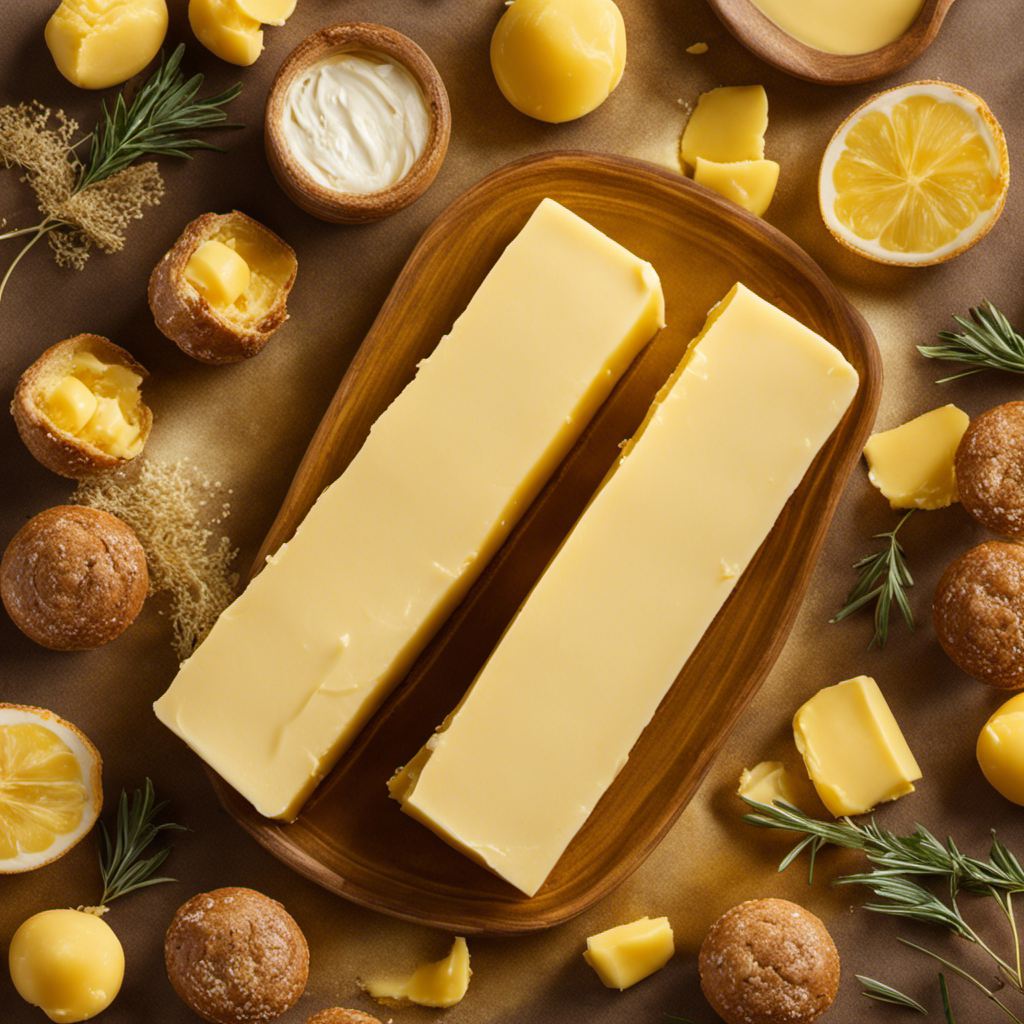Being a lover of nutrition, I’ve constantly wondered about the calorie content in the delightful mix of **grits** and **butter**. Delve into this intriguing discovery to satisfy your curiosity about this tasty dish!
In this article, I will provide you with evidence-based information on the calorie content of this classic dish. We will explore the factors that affect its caloric value, compare different types of grits with butter, and even offer some tips to reduce calorie intake.
If you’re looking for a lower calorie option, we’ll also discuss some delicious alternatives.
Let’s dive in and uncover the truth about grits with butter!
Key Takeaways
- Grits with butter are a good source of energy and essential nutrients.
- The calorie content of grits with butter can vary depending on the portion size.
- Butter enhances the flavor and richness of any type of grits.
- Tips for reducing calorie intake in grits with butter include portion control, using low-fat substitutes, and adding low-calorie toppings.
Understanding the Calorie Content of Grits With Butter
If you’re wondering about the calorie content of grits with butter, it’s important to understand the nutritional value.
Grits are a popular breakfast food made from ground corn, and when combined with butter, they provide a good source of energy and essential nutrients. One of the nutritional benefits of grits with butter is that they are rich in carbohydrates, which are the body’s main source of fuel.
Additionally, the butter adds flavor and a small amount of fat to the dish. However, it’s worth noting that the calorie content of grits with butter can vary depending on the portion size. Larger portions will naturally have more calories, so it’s important to be mindful of your portion sizes to control your calorie intake.
Factors Affecting the Caloric Value of Grits With Butter
The taste and consistency of grits can be affected by the amount of butter added. When it comes to preparing a delicious bowl of grits, there are several factors that can influence the taste and overall experience. Here are some key factors to consider:
- Quality of butter: Using high-quality, fresh butter can enhance the flavor of grits.
- Amount of butter: Adding just the right amount of butter can contribute to a creamy and rich texture.
- Seasoning: Combining butter with complementary seasonings, such as salt, pepper, or herbs, can elevate the taste of grits.
- Cooking technique: The way you incorporate butter into the grits during the cooking process can impact the overall flavor and consistency.
Aside from taste, butter also provides health benefits when added to grits. Butter contains essential nutrients like vitamins A, E, and K, as well as beneficial fatty acids. It can enhance the absorption of fat-soluble vitamins and promote satiety. However, it’s important to consume butter in moderation as it is high in calories and saturated fats.
Comparing Different Types of Grits With Butter
When it comes to enjoying your bowl of grits, you’ll want to consider the differences in taste and texture between various types of grits with butter. Different cooking methods can also impact the final result. For instance, stone-ground grits are coarser and have a more pronounced corn flavor, while instant grits are finer and cook faster. Here’s a breakdown of the nutritional benefits of different types of grits:
| Type of Grits | Calories | Fat (g) | Carbs (g) | Protein (g) |
|---|---|---|---|---|
| Stone-Ground | 143 | 2 | 29 | 4 |
| Instant | 145 | 2 | 30 | 4 |
| Quick-Cooking | 150 | 2.5 | 30 | 4 |
Regardless of the type you choose, adding butter can enhance the flavor and richness of your grits. Just be mindful of the portion size and the additional calories it adds. Grits with butter can be a delicious and satisfying addition to your breakfast or any meal.
Tips for Reducing Calorie Intake in Grits With Butter
To reduce your calorie intake while enjoying buttered grits, try using a smaller amount of butter or opting for a low-fat butter substitute. By practicing portion control and making mindful choices, you can still enjoy the deliciousness of grits without consuming excessive calories.
Here are some tips to help you reduce the butter in your grits:
- Use a measuring spoon to portion out the butter and stick to the recommended serving size.
- Gradually decrease the amount of butter you add to your grits over time.
- Experiment with low-fat or light butter substitutes to find one that suits your taste.
- Enhance the flavor of your grits with herbs, spices, or low-calorie toppings instead of relying solely on butter.
By implementing these strategies, you can enjoy the creamy goodness of grits while reducing your calorie intake.
Now let’s explore some delicious alternatives to grits with butter for a lower calorie option.
Delicious Alternatives to Grits With Butter for a Lower Calorie Option
For a lower calorie option, you can try delicious alternatives to enjoy with your grits without butter. Incorporating healthy grits recipes into your breakfast routine can provide a satisfying and nutritious start to your day.
One option is to top your grits with fresh fruits such as berries or sliced bananas. Not only do these fruits add natural sweetness, but they also provide essential vitamins and minerals.
Another alternative is to mix in some low-fat yogurt or almond milk for a creamy texture without the added calories.
For a savory twist, you can try adding some sautéed vegetables like spinach, mushrooms, or bell peppers. These additions not only enhance the flavor of your grits but also contribute to a balanced and low calorie breakfast option.
Frequently Asked Questions
Are Grits With Butter a Healthy Breakfast Option?
Grits nutrition facts show they are a healthy breakfast option. However, the addition of butter affects the overall nutritional value. While butter adds flavor, it is not a good source of healthy fats for breakfast.
What Is the Recommended Serving Size for Grits With Butter?
I’d say the recommended serving size for grits with butter depends on your dietary needs. It’s important to consider the nutritional value and adjust accordingly.
Can I Substitute Butter With a Healthier Alternative in Grits?
Yes, you can substitute butter with healthier alternatives in grits. There are many options like avocado, olive oil, or nut butter that can add flavor and provide essential nutrients. These alternatives can make your grits a healthier breakfast option.
Are There Any Additional Toppings or Condiments That Can Be Added to Grits With Butter Without Increasing the Calorie Content Significantly?
There are several additional toppings or condiments that can be added to grits with butter without significantly increasing the calorie content. Some low-calorie alternatives include fresh herbs, diced vegetables, or a sprinkle of Parmesan cheese.
Are There Any Specific Health Benefits Associated With Consuming Grits With Butter?
There are specific health benefits associated with consuming grits with butter. Grits are a good source of carbohydrates and fiber, while butter provides essential fats. Together, they provide a balanced nutritional value for overall well-being.
Conclusion
In conclusion, understanding the calorie content of grits with butter is crucial for maintaining a healthy diet.
While some may argue that the taste of grits with butter is irreplaceable, it’s important to remember that there are delicious alternatives available that are lower in calories.
By reducing calorie intake in grits with butter and exploring these alternatives, individuals can still enjoy a satisfying breakfast while staying on track with their health goals.
Making informed choices about food is key to a balanced and nutritious lifestyle.
